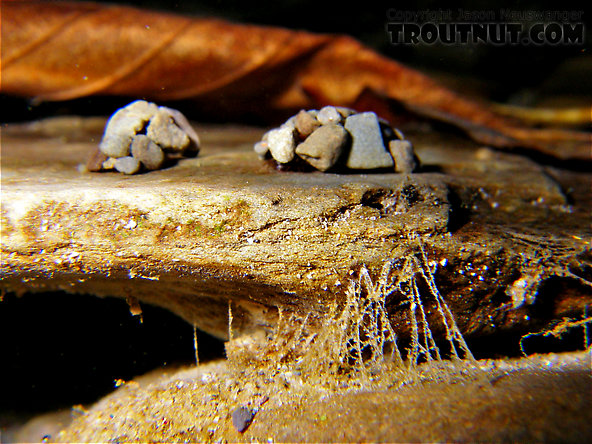Adaptation
The larvae, as a mean of protection, makes a case for itself out of small pebbles and sand. Their case is dome shaped, much like how a turtle's shell (Eiseman, Charney and Carlson 2010). The case can be up to 12 mm long. At each end of the case the larvae keep two opening of equal size. One is to allow the head to extend out of the case. The second opening is to allow its legs to extend out of the case as well. As the larvae grows it gets rid of the old case as it gets too small and make a new, larger case. The do this by beginning at one end of the case with an opening. At that opening they add on pebbles until the new case is large enough to hold them. Once it reaches the right size the larvae would then cut off the old case (Eiseman, Charney and Carlson 2010). The case allows the larvae to obtain food as it grazes on rocks with some protection.
The larvae of Glossosoma intermedium gets dispersed through the use of drifting (Wallace 2011). This happens when the larvae let go of the bottom of the stream or river that it resides in giving up its case in order to get carried downstream to a new location. This is a way for the larvae to reduce competition within a small area for food.
